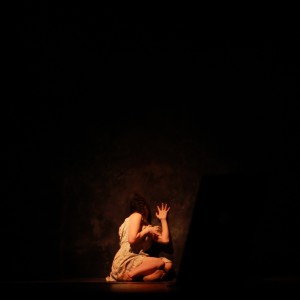
Introduction
Butoh is a style of abstract-expressionist dance theatre that was developed in Japan in the middle of the twentieth century. It’s two key founders, Tatsumi Hijikata and Kazuo Ohno, were both classically trained dancers, with background in ballet and jazz, and with a deep cultural knowledge of the styles of dance theatre that preceded Butoh in Japan, particularly the kabuki and noh traditions. This guide will explore the development of the artform and the specific aesthetics used during performances.
Terminology
- Avant-Garde Theatre: experimental theatre that began in France in the mid-nineteenth century as a reaction against accepted traditional theatre and dramatic ideas.
- Dairakudakan: the largest Butoh ensemble in Japan.
- Existentialism: a philosophical theory which emphasizes the existence of the individual person with their own free will.
- Kabuki: a traditional Japanese form of theatre, incorporating dance, music, and mime.
- Noh: a form of Japanese theater which originated in the fourteenth century and includes music, dance and drama.
- Sankai Juku: a contemporary Butoh ensemble in Europe.
Key Dates & Events
- 1945 - Bombing of Hiroshima and Nagasaki and the end of World War II.
- 1959 - Hijikata and Ohno present Forbidden Colors (now considered the first butoh performance).
- 1962 - The Asbestos Hall studio is founded by Tatsumi Hijikata and dancer Akiko Motofuji.
- 1966 - The term “Butoh” is officially coined by dancer Akira Kasai.
- 1972 - Butoh company Dairakudakan is founded.
- 1975 - Butoh company Sankai Juku is founded.
- 1986 - Death of Tatsumi Hijikata.
- 2010 - Death of Kazuo Ohno.
- 2016 - The first dedicated Butohkan (theatre) is founded in Kyoto.
Context & Analysis
After the events of the second world war in the Pacific theatre - which culminated in the bombing of the cities of Hiroshima and Nagasaki in Japan - Tatsumi Hijikata and Kazuo Ohno envisioned a style of contemporary dance theatre that rejected traditional ideals of beauty and embraced topics that were extreme, grotesque and absurd. In this way, the development of Butoh
to read our learning module for Butoh and to unlock other amazing theatre resources!StageAgent Resources
StageAgent Sections
Guides
World Theatre
Theatre History
Practitioners
